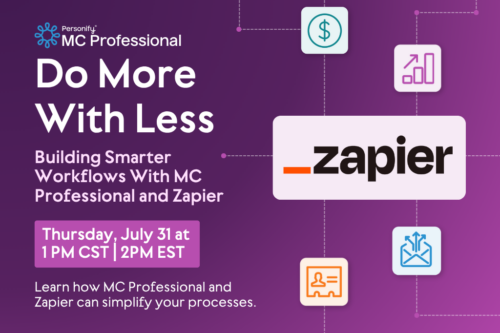Your membership pricing is a crucial part of what retains and delights your members, while also attracting new ones. Plus, it’s a big part of your organization’s long-term success. Understanding the membership pricing model and setting the right membership dues are essential steps.
Finding that sweet spot in your membership prices isn’t easy. Especially when you factor in your operational costs, revenue goals, and enticing future and existing members. Luckily, all it takes is a bit of reflection, a deep dive into your data, and these tips and best practices in your back pocket.
What is Membership Pricing?
A membership pricing model is a framework that determines how your members will pay for your organization’s exclusive benefits and experiences. This includes how membership dues are structured. It provides a reliable source of income to help you maintain your organization’s success.
Strategically, the most effective and profitable membership pricing model will appeal to as many current and prospective members as possible while meeting revenue targets.
What is a Membership Pricing Model?
The right membership pricing model is a personal choice. What works for you may not work for another organization.
Before you choose a membership pricing model, figure out what criteria is important for you. According to the 2023 Membership Marketing Benchmarking Report, more than half of associations base their membership dues on specific attributes like qualifications, company size, and experience.
Depending on your goals and resources, there are 7 common membership pricing models to choose from:
1. One-Time Fixed Fee
This membership pricing model is fuss-free: members pay a single one-time fee in exchange for membership to an organization.
This is ideal if you only have one product or service offering with fixed features or pricing that doesn’t require ongoing support. It attracts customers because it’s easy to sell and understand, and doesn’t feel like a big commitment. If you decide to include extra features or perks, it’s easy to add that onto your base cost.
The only downside is that you lose additional revenue that comes with ongoing, recurring pricing.
A great example is Wild Montana. They offer both a one-time fixed fee and a recurring monthly membership fee with flexible pricing.
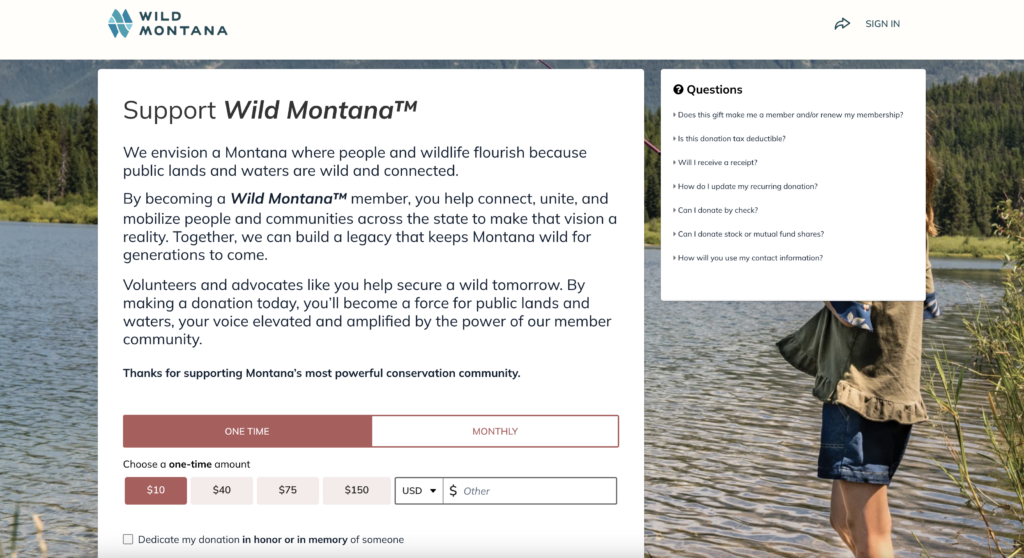
2. Recurring Fixed Fee
With this pricing model, members pay a fee over a recurring time period, such as monthly, quarterly, or annually. This is a common and frequently used pricing model that provides a steady source of income. It’s ideal for content or products that change regularly.

For example, The Silicon Valley Black Chamber of Commerce offers recurring and fixed pricing with different tiers and requirements, suited for businesses of any size.
The downside is that you need to bring consistent value to retain your members. Otherwise, you risk membership cancellations. A great way to encourage renewals is to offer early bird discounts or perks.
3. Tiered Pricing
This pricing model offers different fee options that members can choose from. Each tier comes with increased access to benefits and content, such as the American College of Chest Physicians’ membership pricing model.
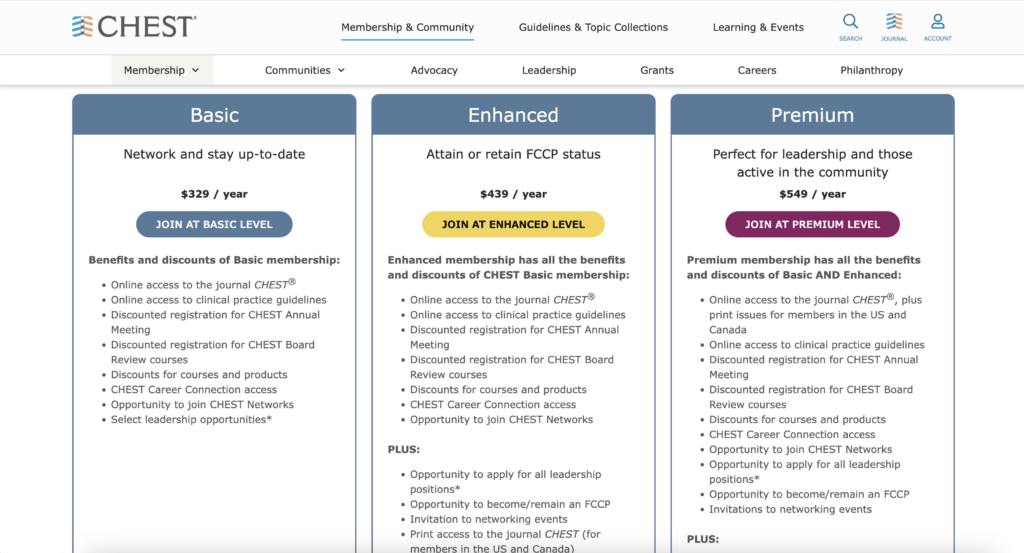
You can upsell memberships and retain members with tiers that showcase long-term value as they grow with your organization. It also allows you to meet the needs of different personas with distinct pricing tiers that attract your ideal members.
The only downside is choice paralysis. Optimally, have 2-3 tiers, so your prospective members aren’t overwhelmed by options.
4. Family or Group Fee
This pricing model, like the one used by The Islamic Center of Pittsburgh, increases your membership base with a lower membership fee for members who join as a family or group.
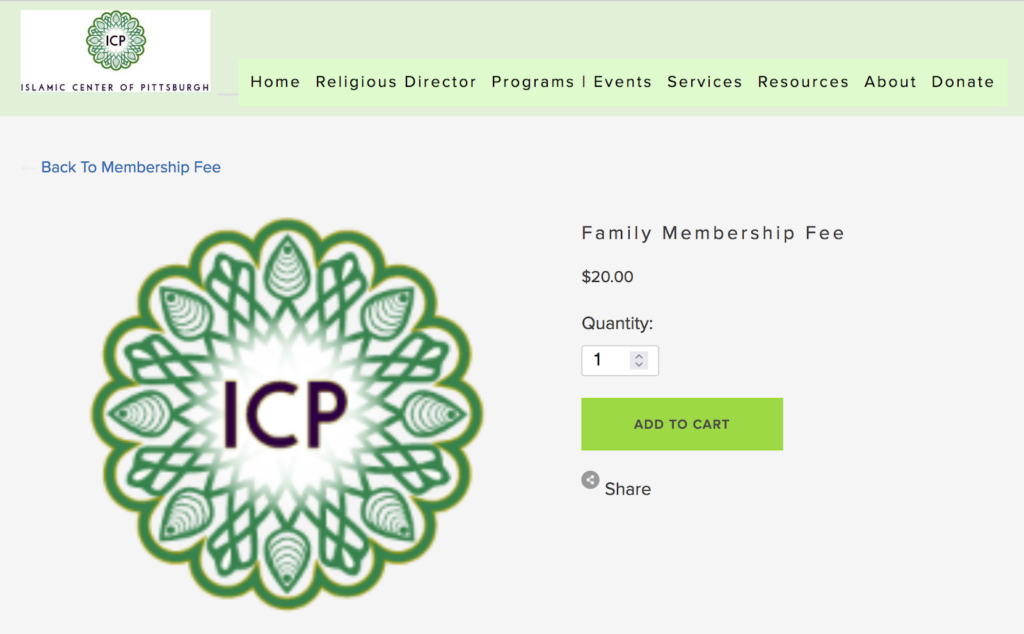
It’s affordable for members and nurtures long-term relationships with potential ones as they move through different life stages.
Unfortunately, this means you lose out on individual membership fees, which can impact your revenue. This might be a good option if you have other revenue sources and want to grow your organization’s membership.
5. Freemium
With this pricing model, organizations like the Information Systems Audit and Control Association (ISACA) offer both a free basic membership and a paid membership where members can purchase access to additional benefits and exclusive perks.
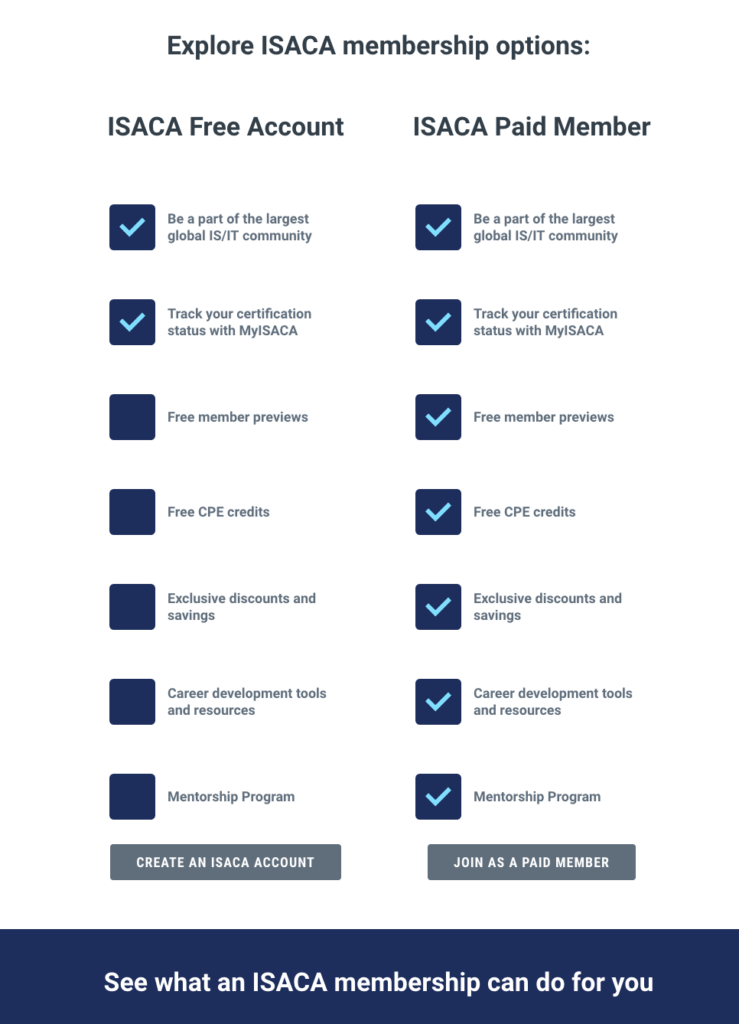
With a free membership pricing model, you’ll attract more prospective members, nurture individuals to become long-term members, and increase accessibility. Plus, you can offer free memberships to key stakeholders or community members to show your appreciation for their involvement in your organization.
The only downside is that free doesn’t always translate to an actual fee! Plus, it can be tricky striking a balance between restricted access and value that entices free members to upgrade and stay.
6. Basic Membership With Add-Ons
Similar to freemium pricing, this membership pricing model offers a basic fee with the option to pay for extra upgrades or benefits.
It lets members, like the ones at the Association for Supply Change Management, pick and choose what perks they’d like to have access to while maintaining a base cost they’re comfortable with. Here, they can pay their membership fee and add on a certification upgrade.

Your loss here is not getting any takers on your upgrades or add-ons, which potentially can lead to decreased revenue. You can counter this with non-dues revenue or having a base cost that already meets targets.
7. Pay What You Can
Not everyone is in a position to pay full membership prices. This model, like the one at the American Theatre and Drama Society, allows interested, prospective members to pay a fee they think is fair in exchange for access to exclusive member benefits.
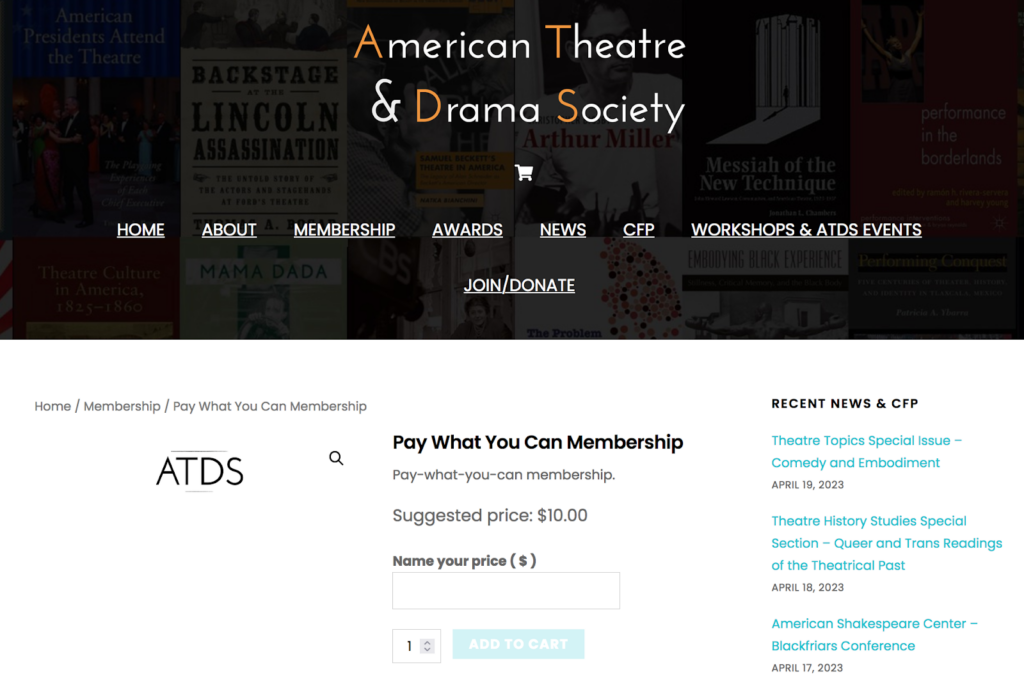
This model is ideal for fledgling professionals and existing members at different life stages. They may want membership to your organization but have a limited budget. This option lets you grow and retain your membership base while investing in members whose financial situation may change in the future.
Of course, this membership pricing model doesn’t guarantee enough funds to support your organization. In the end, this pricing model is ideal if you’re not relying on membership fees as the main bulk of your revenue.
Considerations for Setting Up a Membership Pricing Model
1. Organization Expenses
Take into account the fixed costs (like equipment and taxes) and variable costs (like travel and freelance work) that come with running your organization. Use this information to calculate an annual sum of costs which you can then divide among your number of members to determine your minimum membership fee.
Factor in how much revenue you’d like to earn, and you’ll get an idea of what a reasonable membership fee will look like for your organization.
2. Membership Prices of Similar Organizations
Evaluate your competitors and use their membership prices as a starting point. But don’t get too hung up on what others are doing. Remember, your organization has distinct, unique value. Showcase this in the benefits featured in your pricing model!
3. Membership Value Perceived by Members
Your membership fee should reflect what most members have been willing to pay. Use this as a baseline for what’s fair to your organization and its members. You may also want to send out member feedback surveys or conduct interviews with long-standing members to find out how your benefits have met their interests and priorities.
Ask them what has encouraged their membership renewal, areas of improvement, and how your organization has helped them accomplish their goals.
5 Best Practices for Pricing Your Membership Program
1. Understand Your Members.
This can include mapping your member journey and creating member personas. Bottom line, trust your data! It can tell you a lot about your members, so your fees reflect what exclusive benefits and experiences that have compelled members to join and stay.
2. Offer Compelling Benefits
Feature benefits that resonate with your members and meet their needs. Depending on your organization, include perks like discounts, industry-leading content, networking events with thought leaders, mentorship programs, and more.
3. Entice New Members to Join
Make sure your new member journey is as frictionless as possible. This includes having a dedicated page on your website that includes essential membership information for prospective members. Sweeten the deal with free trials or limited-time new member promotions.
4. Optimize Your Member Welcome Process
It’s undeniable that first impressions matter. Start your members off with positive experiences as soon as they join. This can include personalized welcome letters, member meet and greets, new member features on your website and social platforms, free merchandise, and more.
5. Raise Prices as Needed
If your renewal rates are above 80%, you may want to consider raising your dues. Many other organizations are, according to the 2022 Membership Marketing Benchmarking Report. However, trust your data and talk to long-standing members to see if a price increase makes sense. If it does, add a little charm to your fees by swapping numbers like $50 for $49.99.
Wrapping Up: Optimizing Your Membership Prices
Finding the right membership pricing model takes some time, patience, and some exploration. Your members are key to your organization’s success, so don’t be afraid to ask them about what they love and what they don’t.
With the right data, you’ll be able to balance your organizational expenses and revenue goals with what feels fair and enticing to members. Then you’ll be well on your way to your ideal membership pricing model!
Further Reading:
15 Elements of Successful Nonprofit Membership Programs
Your Guide to Members-Only Content
Increase Membership for Associations & Nonprofits With These 50 Tips
Your Guide to Building a Membership Marketing Strategy: Tips for 2023 and Beyond
The Complete Guide to Mentorship Programs for Membership Organizations








